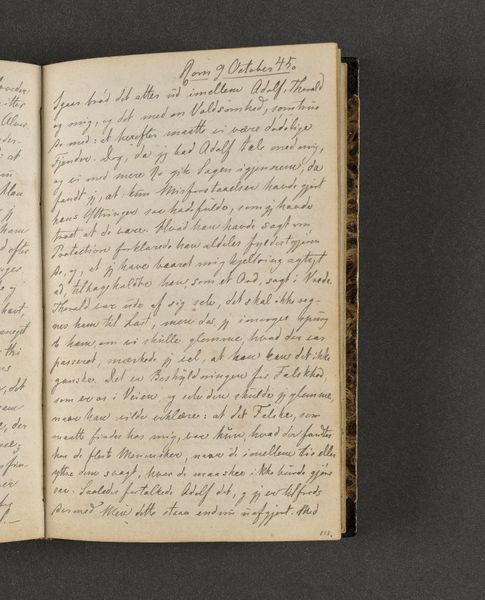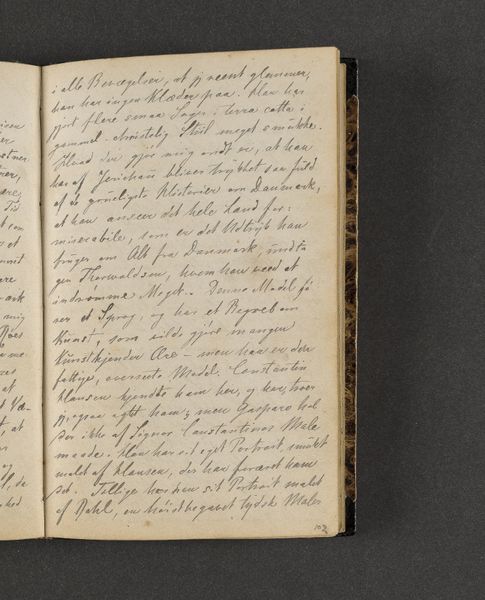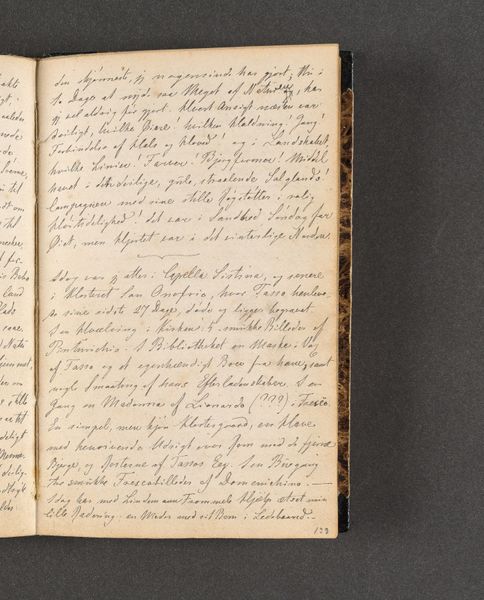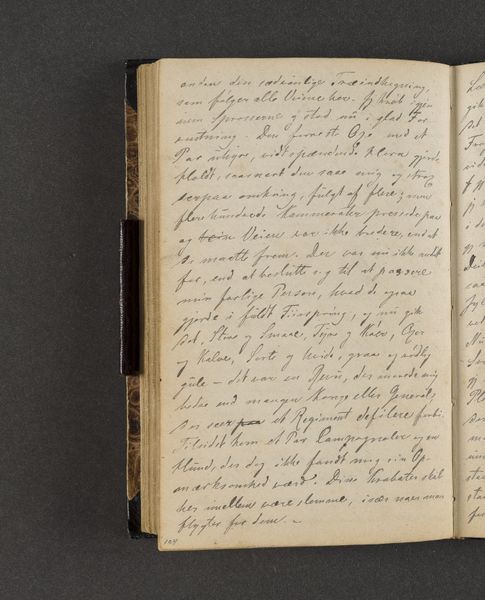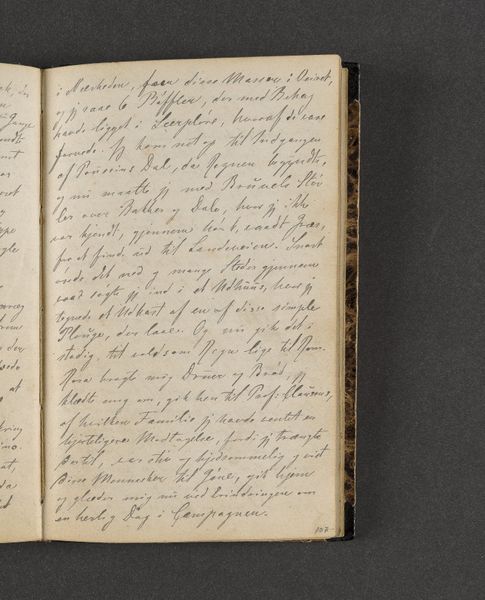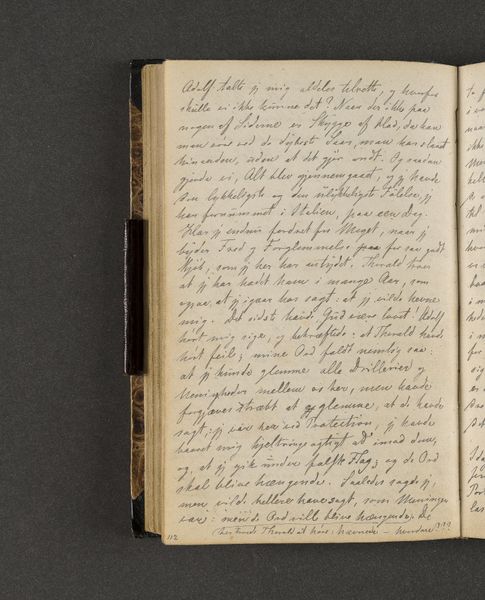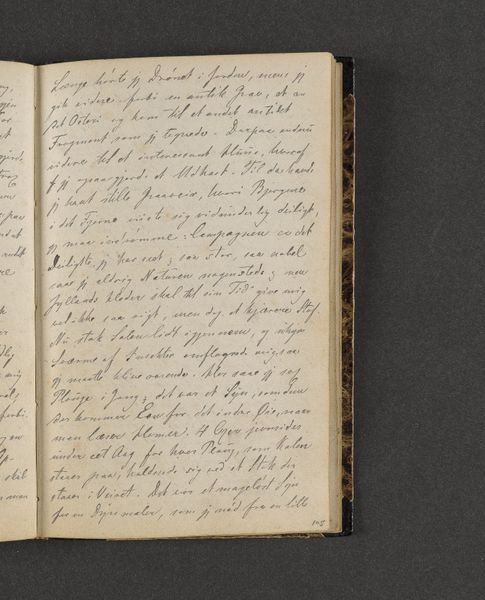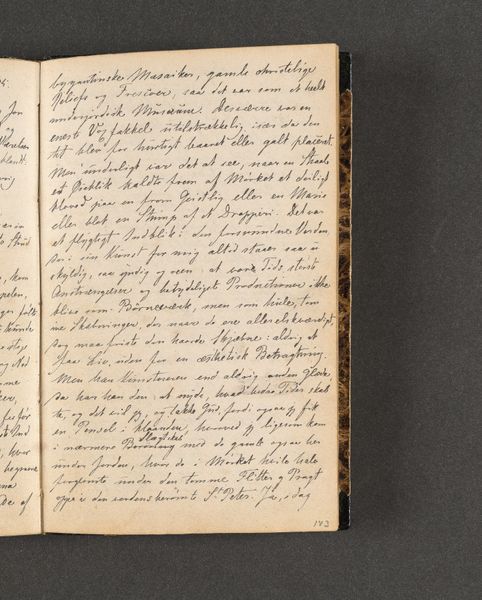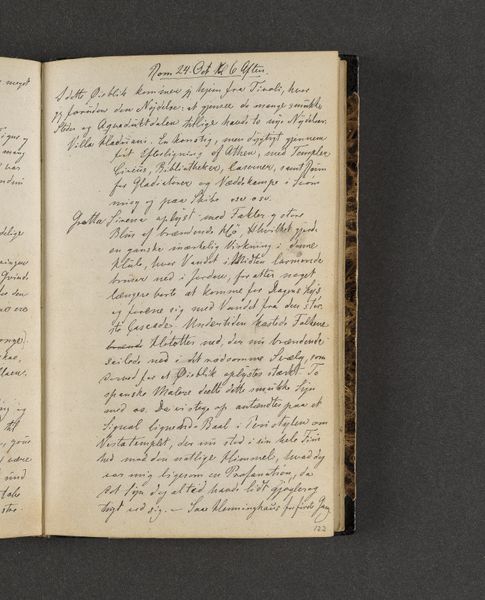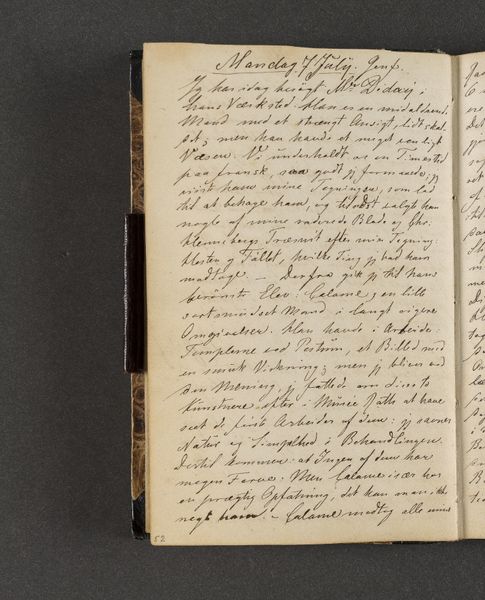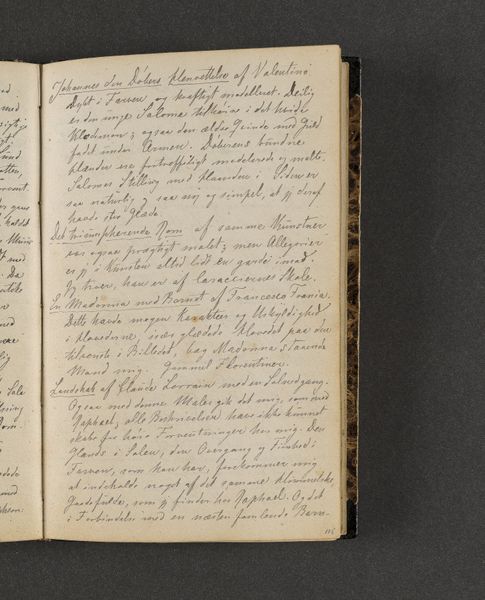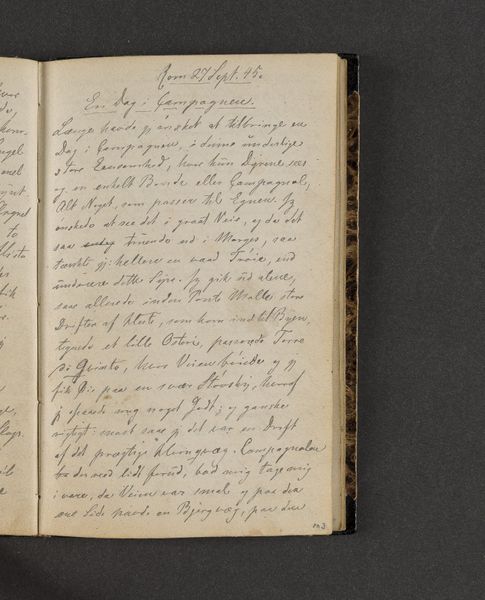
drawing, paper
#
drawing
#
sketch book
#
paper
#
romanticism
Dimensions: 161 mm (height) x 103 mm (width) x 11 mm (depth) (monteringsmaal)
Curator: We're looking at "Rejsedagbog," or "Travel Diary," a page from a sketchbook by Johan Thomas Lundbye, created in 1845. Editor: It gives me the impression of something very personal. I see the handwritten script filling nearly the entire page, dense with text, and instantly feel like an interloper looking into a very private thought process. What can you tell me about the physical nature of it? Curator: Certainly. Lundbye crafted this page with ink on paper, a fairly typical material for travel sketches and diary entries of the period. What is fascinating here, materially speaking, is the ready availability of pen and paper, enabling artists such as Lundbye to become mobile ethnographers. Consider the materiality of this book itself – binding, cover, the particular surface texture of paper all speak of the maker and owner’s access to the materials necessary for creation. Editor: That's insightful. And I wonder, given his social standing as an artist and intellectual, how did the institutional setting impact the dissemination, if any, of these kinds of travelogues. It's really the inscription of daily life, though meant for his eyes only, so the act of writing itself becomes a political, and somewhat exclusive act. Curator: Yes, precisely! The sketchbook, more broadly, as an instrument became common at the time, yet literacy rates impacted production immensely. Editor: It really gives one pause. We may see "Travel Diary," but understand that we’re not necessarily peering into the "authentic" voice. This artifact became meaningful because someone found meaning *in it* and preserved it within the historical context and museum institution as its home today. Curator: I agree entirely, there’s much more to uncover beyond the literal image itself. Editor: Precisely. Thank you!
Comments
No comments
Be the first to comment and join the conversation on the ultimate creative platform.
